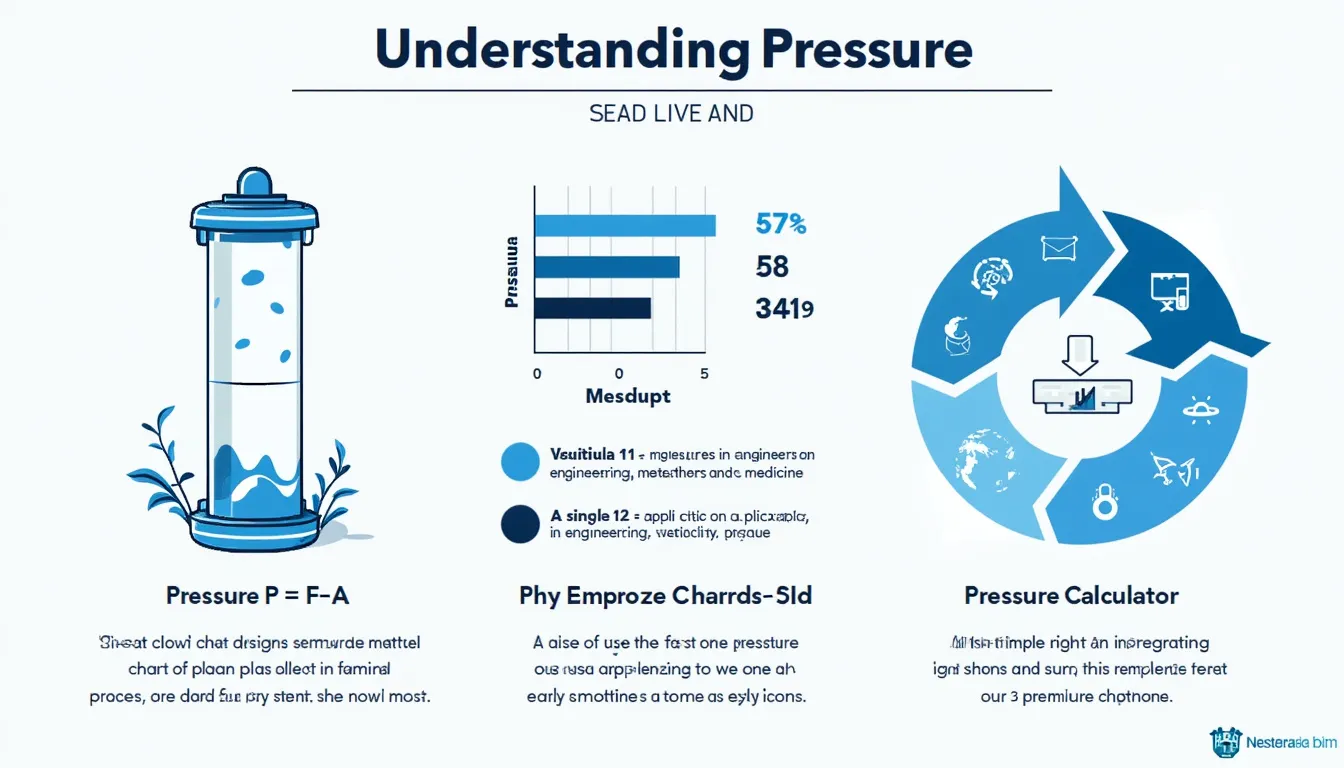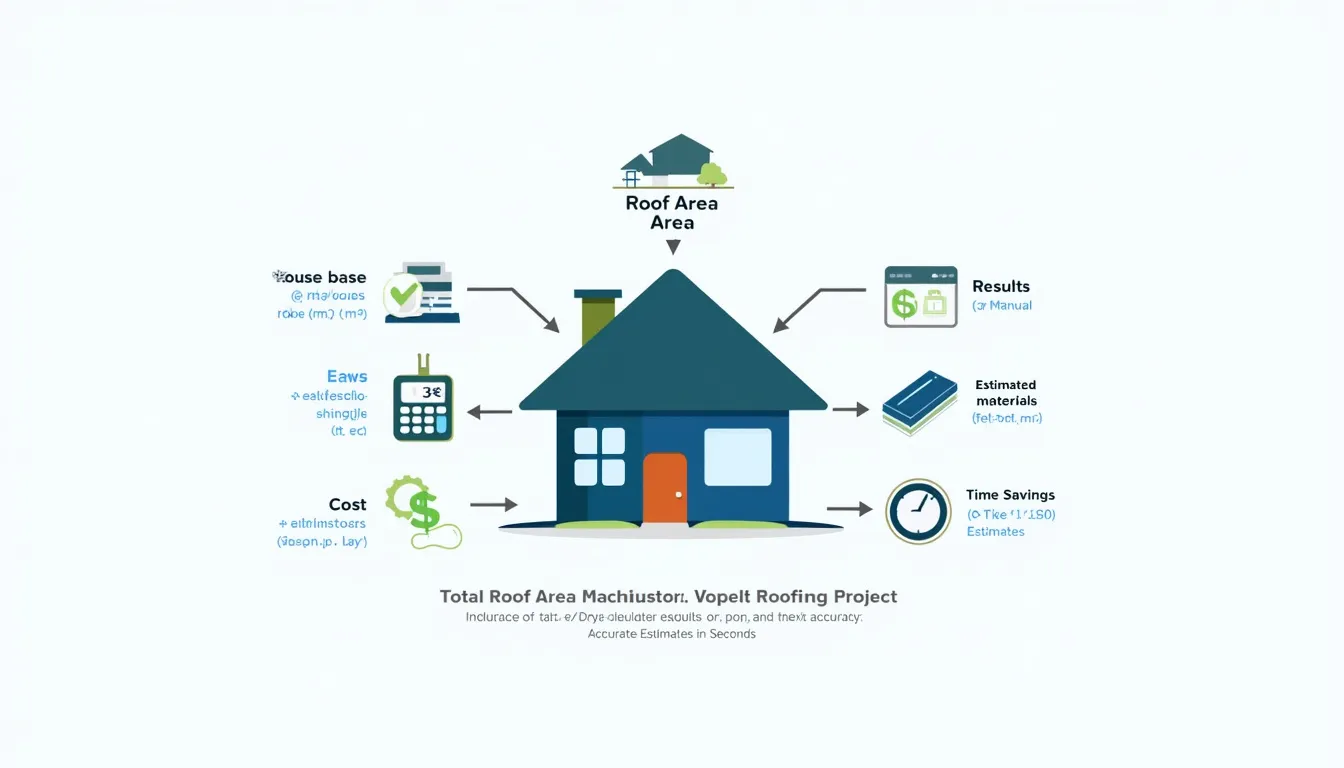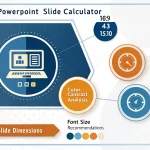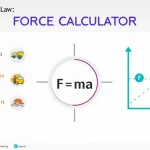Pressure Calculator
Is this tool helpful?
How to use the tool
- Force (N): Type any positive number, e.g., 1500 or 825.
- Surface area (m²): Enter a positive value, e.g., 0.25 or 0.42.
- Press Calculate Pressure; the result appears below in Pascals (Pa).
The calculator applies:
$$P = rac{F}{A}$$- Example 1: 1500 N on 0.25 m² → $$P = rac{1500}{0.25}=6000\ \text{Pa}$$
- Example 2: 825 N on 0.42 m² → $$P = rac{825}{0.42}\approx1964.29\ \text{Pa}$$
Quick-Facts
- 1 Pa equals 1 N/m² (BIPM SI Brochure, 2019).
- Sea-level atmospheric pressure: 101 325 Pa (NIST, 2021).
- Standard car tires: 210-240 kPa (AAA Maintenance Guide, 2022).
- Normal arterial pressure: 120/80 mmHg ≈ 16 kPa (AHA, 2018).
- Industrial hydraulics operate at 10-30 MPa (Bosch Rexroth Catalog, 2020).
FAQ
What is pressure?
Pressure is force distributed over area. “One pascal is the pressure of a force of one newton per square metre” (BIPM, 2019).
How does the calculator work?
It divides your force value by your area value and displays the quotient in Pascals—no hidden steps.
Can I use pounds or square inches?
Convert first: 1 lbf = 4.44822 N and 1 in² = 0.00064516 m² (NIST, 2021). Then enter the SI numbers.
What accuracy can I expect?
The tool rounds to two decimals. Provide precise inputs for comparable output precision.
What is gauge versus absolute pressure?
Gauge subtracts atmospheric pressure from absolute. Absolute = Gauge + 101 325 Pa (NASA Glenn, 2020).
How do I convert psi to Pa?
Multiply psi by 6894.76 to obtain Pascals (ASME B1, 2019).
Does the tool accept scientific notation?
Yes. Enter 2.5e6 to represent 2 500 000, for instance, and the script parses it correctly.
What safety margin should engineers apply?
Designers typically add 25 %-50 % over calculated pressure for safety (EN 13445-3, 2014).
Important Disclaimer
The calculations, results, and content provided by our tools are not guaranteed to be accurate, complete, or reliable. Users are responsible for verifying and interpreting the results. Our content and tools may contain errors, biases, or inconsistencies. Do not enter personal data, sensitive information, or personally identifiable information in our web forms or tools. Such data entry violates our terms of service and may result in unauthorized disclosure to third parties. We reserve the right to save inputs and outputs from our tools for the purposes of error debugging, bias identification, and performance improvement. External companies providing AI models used in our tools may also save and process data in accordance with their own policies. By using our tools, you consent to this data collection and processing. We reserve the right to limit the usage of our tools based on current usability factors.







